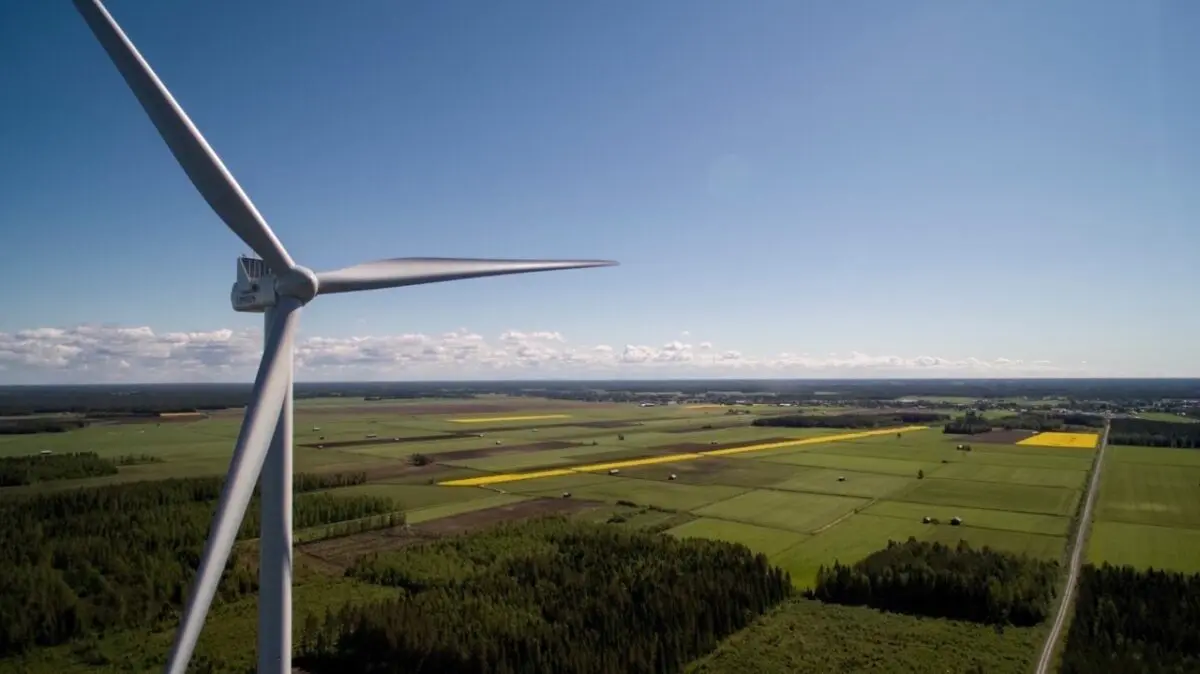

Ingka Investments, the owner of the Ikea retail chain, has taken another slice of ownership in the $4 billion Golden Plains wind project in Victoria as the biggest wind project in the country ramps up production.
The 1,333 megawatt (MW) facility near Geelong began injecting its first power into the grid a few weeks ago, but has been slowly ramping up its output as it also deals with issues from falling parts on its turbine blades which has halted construction efforts and caused it to create a buffer zone around some of the turbines.
On Friday, project owner TagEnergy announced another investment by Ingka, which has already taken a 15 per cent equity stake in the 756 MW first stage and will now do the same with the 577 MW second stage that has also begun construction.
Despite its problems with the serrated edges of the Vestas turbine blades that have come unstuck, TagEnergy has delivered its project – and secured its grid connection agreement – in remarkably quick time, effectively overtaking its rival as the biggest wind farm in Australia, the 923 MW MacIntyre project in Queensland.
“We have shown our innovative commercial approach brings large scale projects to life faster,” CEO Franck Woitiez said in a statement. “We will continue to innovate to deliver more projects to speed the transition, and the Government’s supportive policy landscape will facilitate that.
“Throughout the project’s development, we were buoyed by the confidence those at the forefront of the energy transition showed in TagEnergy’s ability to deliver large-scale renewables projects, from our lenders to the Victorian and Australian Governments and the Australian Energy Market Operator.”
TagEnergy is also working on an even bigger wind project, a potential 2,000 MW facility called the Pines in state forestry plantations in the central west of NSW, although that project may not come to fruition until the end of the decade.
Ingka says it will use its stake in the Golden Plains project, and the share of output that it will claim, to reduce its climate footprint.
“We believe the future of energy is renewable, and Australia has such rich potential to harness these sources, especially wind and solar,” said Mirja Viinanen, the CEO and Chief Sustainability Officer at IKEA Australia.
“As we work to reduce our climate footprint in our retail operations, we’re investing in renewable energy through onsite generation at our stores and distribution centre and switching to renewable energy for heating and cooling our buildings.”
TagEnergy started construction on Golden Plains even before it began construction, but it has since also secured contracts with utilities EnergyAustralia (40 per cent of stage 2) and Snowy Hydro (40 per cent of stage 1), and with data centre company Equinix for 20 per cent of stage 1).
Despite these, it also hopes to secure an underwriting agreement from the federal government through the Capacity Investment Scheme. The fact that it has secured some contracts and has already begun construction suggests it might offer a very competitive price.
TagEnergy’s managing director in Australia Andrew Riggs told Renew Economy that would allow it to free up equity for more wind projects, such as The Pines in NSW, the Mt Fox wind project in Queensland, the Devlin Corner wind project in NSW, and a potential four-hour battery addition to the Golden Plains facility.
The project, which is due to be completed in 2027, is the largest onshore wind project anywhere in the world for Vestas, and will feature 215 of its turbines.
However, issues with plastic serated edges, some of which fell from the 79 metre long turbine blades, have created issues with local residents and have been seized upon by wind farm opponents.
The incidents caused Vestas to put in place an exclusion zone around 47 turbines to that each could be inspected to ensure that the blade serrations had been properly attached. Earlier this week, it advised the local community that loose serrations had been discovered on another five turbines after strong winds over the weekend.
“As advised previously, non-critical works should be avoided within 400m of erected turbines with blades attached,” it told local residents and contractors in an earlier advisory last month.
“Should critical works be required within 400m, please remain within your vehicle, with the window up, where possible. If access is required within the 400m zone, please utilise PPE. Helmets can be made available from the GP1 office at the site compound.”
Riggs says the incidents have been “unfortunate” although minor in a project of this size. “It is a small matter. No one is more motivated than them (Vestas) to get it fixed and move on,” he told Renew Economy.
Last of 640 battery packs installed at giant Collie facility, which was to be the…
Global giant behind giga-scale solar farm that will help power aluminium smelter says Australia among…
One developer has flipped a planned solar project with optional battery, into a proposed battery…
OpenSolar's Sophie Wright on the mission to streamline solar businesses so that more money and…
Origin says grid access win will trigger a $175m final payment for giant wind project,…
Santos has been given final approval to begin production at Australia’s dirtiest offshore gas field…